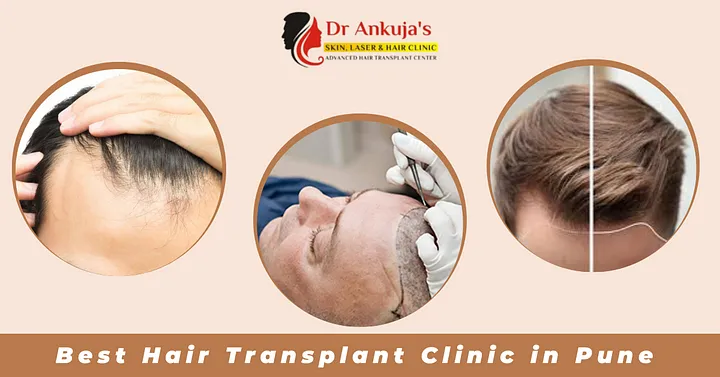Men are emphasising their appearance more and more. For example, they place more emphasis on their haircuts and strive to always appear their best. But kids are beginning to lose their hair at an early age as a result of pollution, eating habits, a busy schedule, and poor sleep. There are many false hair transplant misconceptions on the internet, and the information is not readily available. This is the main cause of the misconceptions most of us have about hair transplant procedures. The truth regarding hair transplants and young men’s hair loss will be revealed in this blog.
Myth: An instantaneous response from a hair transplant
The growth of hair is not instantaneous. It depends on the patient’s rate of recuperation following the procedure. Few individuals heal quickly, and few heal slowly. Overall, it would take four to six weeks, with a maximum of 12 months, to satisfactorily demonstrate all results. Hair loss during surgery is rather common, but soon the newly implanted hair follicle begins to develop and appears natural. The truth is that you should debunk all the myths before choosing to have a hair transplant.
Myth: Getting a hair transplant hurts a lot.
Given that only the operative area is made numb throughout the treatment and the patient is awake and conscious, it is a comparatively painless medical procedure. Following surgery, the surgeon will prescribe painkillers for 2 to 3 days. The hair follicles are removed from the donor location and placed on the recipient’s site using the most recent Follicular Unit Extraction (FUE) technique. The insertions are between 0.7 and 0.8mm, which speeds up recovery and reduces the need for painkillers for the patients.
Myth: Hair transplants only help men
The hair transplant is not just for guys, in actuality. It also applies to women. Women have problems with thinning hair, while men struggle with baldness. Hair transplants can only be performed after the age of 25, when hair loss begins to decline, and it is simple to examine the patient’s hairline pattern. Hair transplants are not gender-specific.
Myth: Only those with wealth can afford it
The idea that only wealthy people can afford hair transplants is untrue. NO. The price is determined on the number of sessions needed and the area of baldness that needs to be treated. Depending on the grafting approach, each secession takes between 6 and 8 hours; the surgeon gives their patients advice on which procedure is most appropriate for a hair transplant after examining the pattern of their hairline.
Myth: Temporary results
FUE is one of the most recent hair transplant procedures, and it produces results that last for years. The patient should take good care of themselves both before and after surgery. The individual can resume their regular work duties after roughly a week.
Myth: Young people can only get hair transplants
It is a fact that men begin to experience balding problems at an early age, but this does not indicate that only young men are affected. Hair transplants are also an option for women and anyone over 75 who are in good health. After the procedure, people may have a hairline that looks natural if their donor hair is of healthy quality.
Myth: The results are not organic
Fact: People find it difficult to tell that the individual has had a hair transplant because the outcome seems so natural. Given that it takes a year to fully recuperate and resume normal life, it’s only a matter of time.
Myth: Bigger grafts will result in greater density
The false assumption that larger grafts result in denser hair is debunked. The hair is removed from the back of the head and implanted in the bald spot by the surgeon. The quantity of transplanted grafts, not their size, determines the density of the hair. Larger grafts could produce hair that looks unnatural.
Myth: Hair transplants for women don’t work
FACT: Not just men can have hair transplants. It also applies to women. Both men and women can benefit from hair transplants. Women who are bald experience it differently than men. Hair generally thins out in women.
Myth: Having a hair transplant can harm your brain
Factual statement: Since no area of the brain is directly touched during the process, there can be no effect on the brain. The repair from the hair transplant is superficial. Only the scalp of the skin is affected and the surface is not penetrated during this treatment.
Myth: Older people shouldn’t get hair transplants
Age does not, in any way, play a significant role in hair transplant surgery. Seniors have a higher success rate for hair transplants. At a younger age, the hair fall pattern is erratic. While in old age the bald spot is fixed and the hair fall settles. A skilled surgeon will carefully inspect the donor area, determine whether new hair will grow after the procedure, and compare the texture and quality of the new hair to the existing hair.
Visit our website or stop by our conveniently located HairClinic facility if you have any additional misconceptions regarding hair transplants. Hair Transplant Clinic at Pune to know more +91 75586457575

